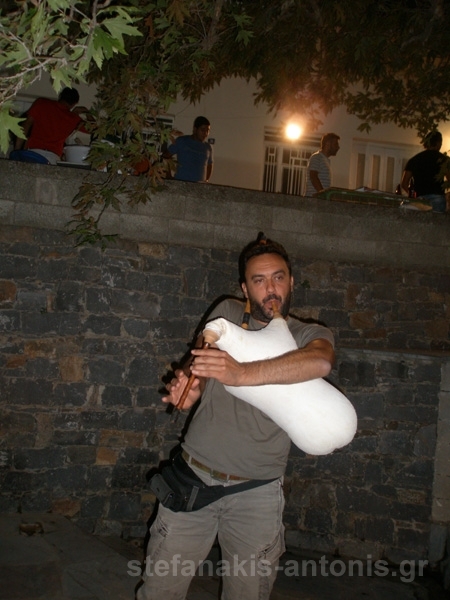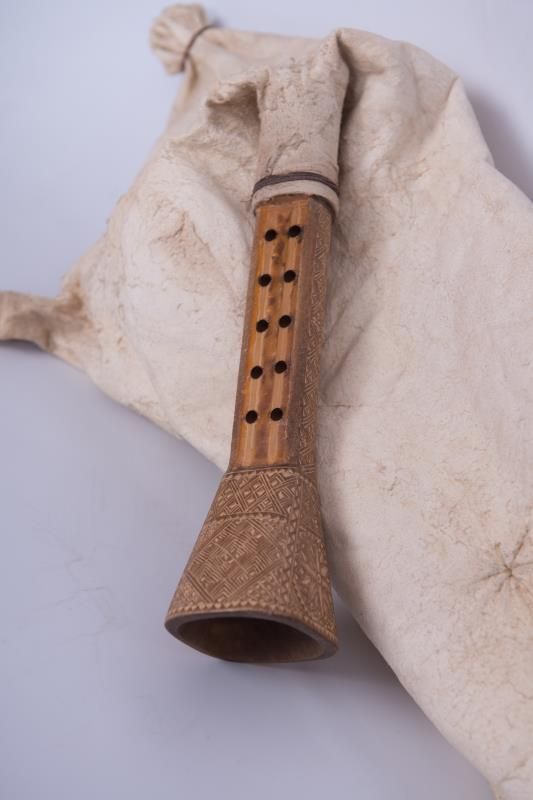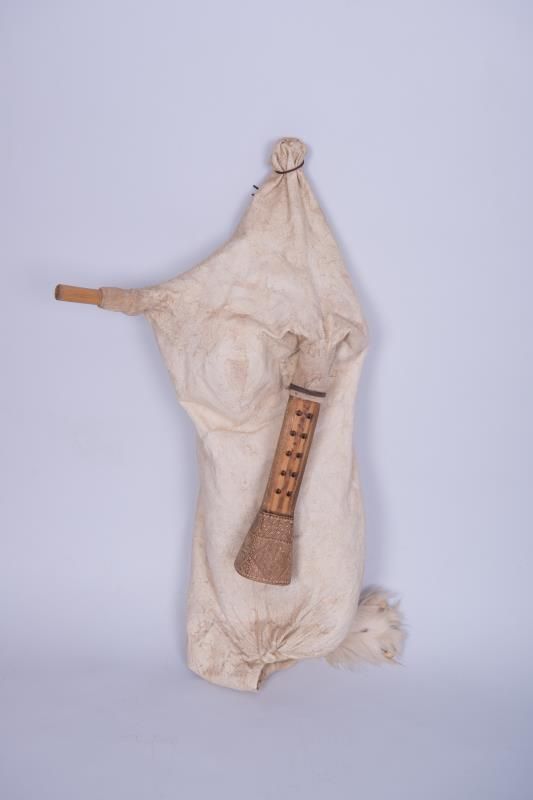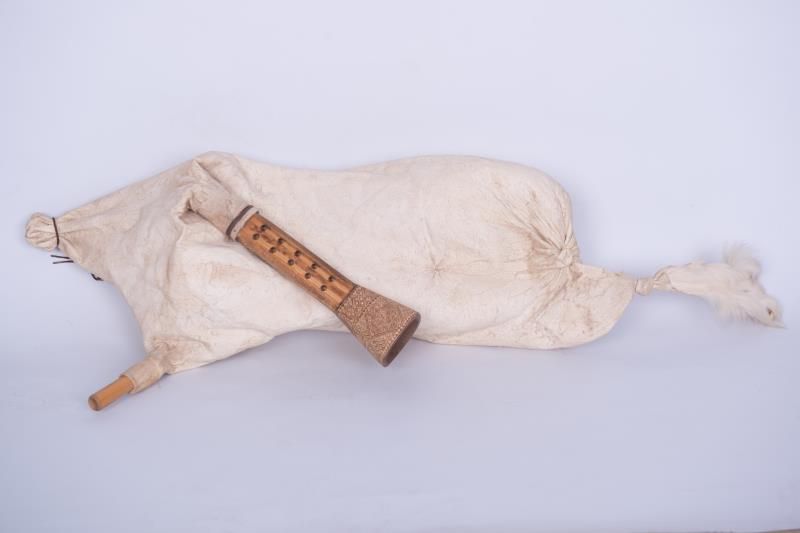Askomandoura
The Tsambouna (Greek Τσαμπούνα ), also tsampouna, tsampounofylaka, askomadoùra or Touloum (see Tulum ) is a bagpipe, which is distributed mainly in the Greek islands, the Greeks coming from the Black Sea region and occasionally on the mainland. Unlike especially in Thrace and Macedonia Gaida has spread it no Bordunrohr.
Method of construction
The Tsambouna is made from locally available natural materials by the player or by a specialized villagers. As air reservoir serves a sheep or goat fur, which is turned over.
The game doubled tubes of about 25 cm length made from olive wood, reeds or leg. Sound is used with a reed holder in the chanters via two single reeds. One of the two game tubes has five, the other, depending on their origin, one to five grip Öchern (5 5 in the Cyclades and Crete, 5 3 on Kalymnos and Astypalia, 5 1 on Patmos, Samos, Chios and Ikaria ).
The crook of wood or pipe is bored cylindrical or conical and 12 cm long. Ornaments can be carved or branded with a hot iron.
Play
Because of their limited tonal range the Tsambouna has its own limited repertoire. The flow of air from the bellows can - are hardly varies and plays a minor role in the accentuation of the melody - as with all bagpipes.
The scale is diatonic. Since the Tsambouna is not made from professional instrument makers, each instrument has its own mood. This presents difficulties in the interaction me other instruments. Usually the Tsambuna is accompanied only by a drum, the Dumbaki, a smaller variant of the Greek Daouli ( in Turkey Davul ). On the islands of the Dodecanese, and in particular Karpathos Lyra and Tsambouna play the melody, accompanied by the sounds Laouto.
To make the melody rhythmically, suggestions and trills are running. The finger holes of parallel chanters are each covered by the same finger. Since the two game tubes are not tuned exactly the same, arise beats that amplify the sound and which are characteristic of the Tsambouna.
This beat principle ( also Schwebungsdiafonie ) is a special form of polyphony in the Balkans, as it is known as iso- polyphony, for example, in southern Albania. Only on the island of Karpathos, there is a two-part diafonen singing of women, which has evolved from the imitation of Tsambouna double pipes. Similar floating sounds produce the Dalmatian double flute Dvojnice (also referred to as Diple ) and the Balkan double reed instrument sopele.
Use
The Tsambouna is used for playing traditional music of the pastoral communities. Because of their penetrating sound it is well suited in order to install outdoor dance. The persistence of the instrument is at risk because its sound and repertoire does not correspond to the modern listening habits today.
Related instruments
Tulum, Diple, Żaqq, Mezwed, Boha without airbag: Alboka
Discography
- Bagpipes of Greece. Recordings and commentary Wolf Dietrich. Topic Records, London 2005 (TSCD930), tracks 15-22, 25-28










